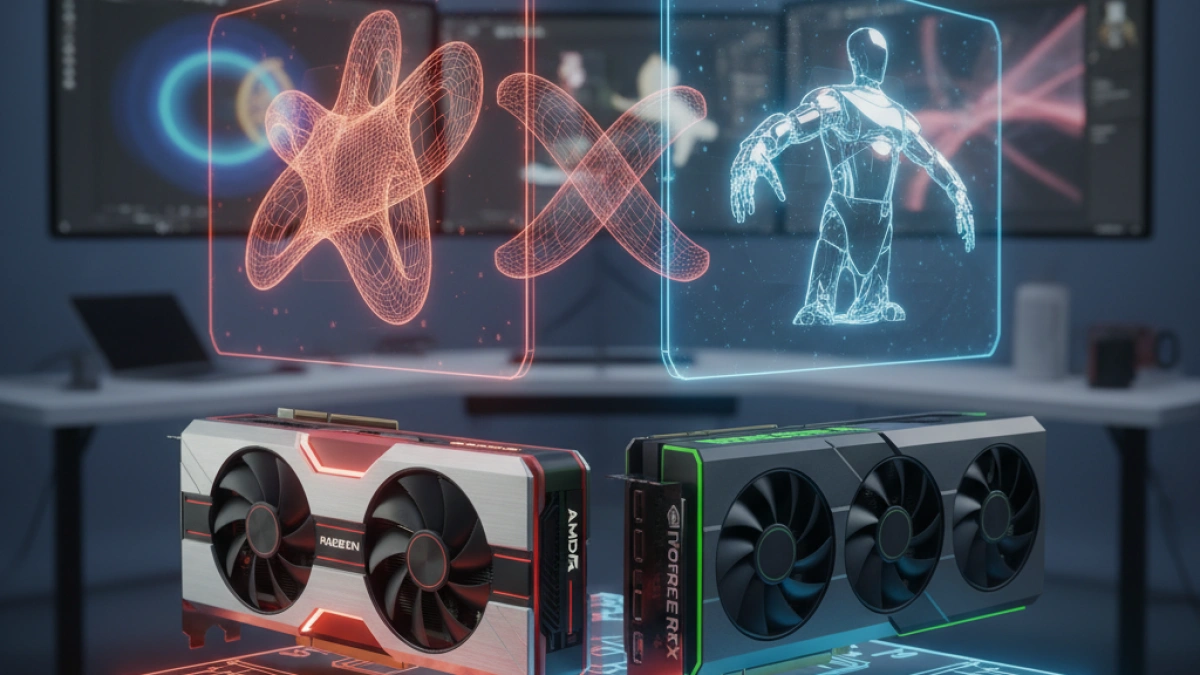In the world of digital art, the choice of graphics card can make the difference between a smooth experience and a series of frustrations. 3D artists require powerful hardware to handle the creation, rendering, and animation of their projects. In this context, AMD and NVIDIA have established themselves as leaders in the GPU industry. Below, we will analyze and compare these two popular options to assist artists in their choice.
Performance and Energy Efficiency
NVIDIA: Power in Rendering
NVIDIA GPUs, especially the RTX series, have demonstrated exceptional performance in rendering tasks thanks to their Turing and Ampere architectures. These graphics cards are known for their ability to provide real-time ray tracing, allowing artists to achieve more realistic lighting and shadows in their projects.
Additionally, DLSS (Deep Learning Super Sampling) technology allows for improved performance without sacrificing image quality. This feature is particularly useful in modeling and animation software where rendering requirements are high.
AMD: A Bet on Creativity
On the other hand, AMD has significantly improved its position in the market with the Radeon RX 6000 series. These cards utilize the RDNA 2 architecture, which offers excellent performance per watt. Although the ray tracing technology in AMD GPUs has not yet reached the level of NVIDIA, they provide competitive results in terms of gaming performance, which indirectly benefits 3D artists looking to create interactive content.
Software and Compatibility
Software Optimization
A vital aspect to consider is compatibility with the software used by 3D artists. NVIDIA has maintained a long-standing partnership with software developers like Autodesk, Maya, and Blender, meaning that many of these tools work optimally with their GPUs. NVIDIA-specific technologies, such as CUDA, are also available to enhance performance in applications.
AMD, despite having a more challenging path in this area, has successfully encouraged several popular programs, such as Blender, to begin utilizing its ray tracing technology and optimized cores for specific tasks.
Drivers and Updates
Drivers play an essential role in GPU performance. NVIDIA stands out for frequently releasing updates that improve compatibility and performance of their graphics cards in specific situations. AMD also has a good track record, though some users have reported occasional issues that can make the experience less smooth.
Cost and Availability
Cost-Benefit Ratio
The cost of GPUs is often a decisive factor. Generally, NVIDIA graphics cards tend to be priced higher compared to their AMD counterparts. However, many artists consider the additional investment in NVIDIA justifiable due to the advanced technologies and features they offer, particularly in real-time rendering and visual effects.
AMD, on its part, has made continuous efforts to maintain competitive pricing, which can attract both beginners and experienced artists looking for a balance between performance and cost.
Conclusion
Ultimately, the choice between an AMD or NVIDIA GPU will depend on the specific needs of each 3D artist. Both brands offer products that can meet different requirements, but it is essential to consider factors such as the type of software in use, available budget, and personal preference.
I invite you to continue reading more news of this kind on my blog, where I continue to explore the fascinating world of digital art and the technology that drives it.




















